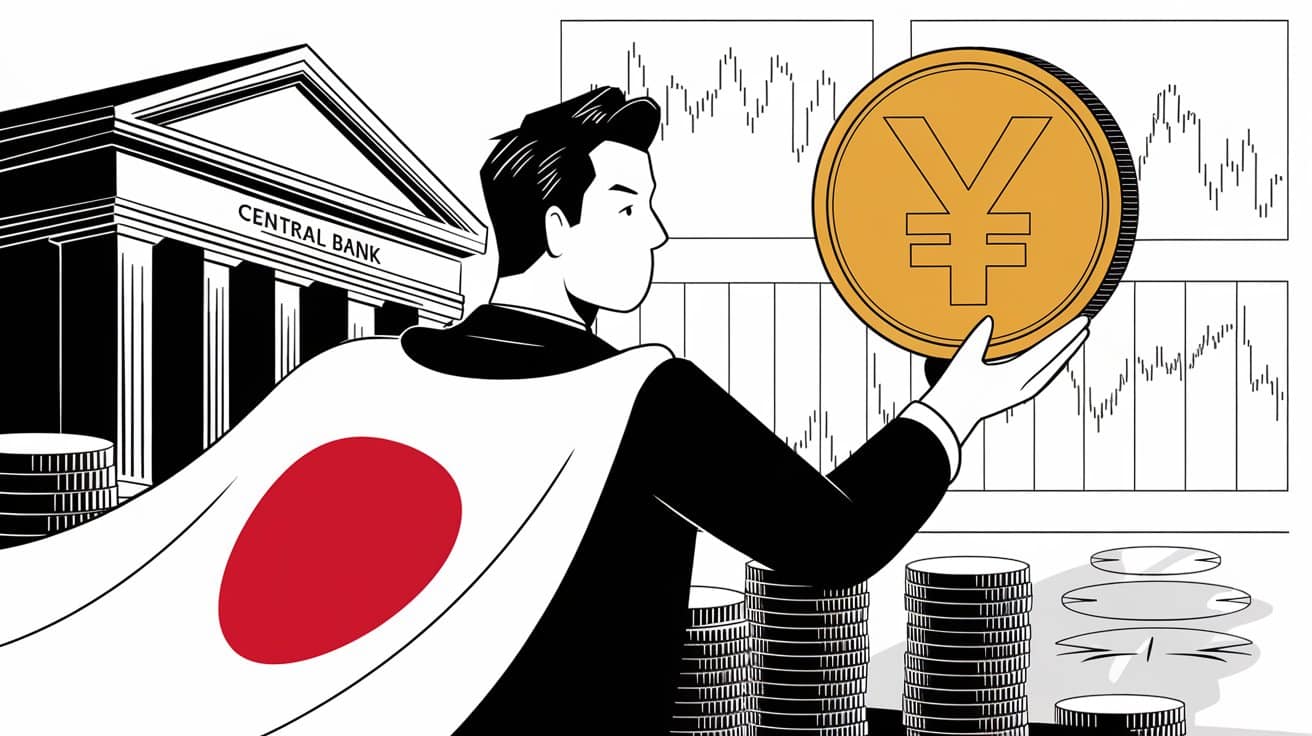The largest cryptocurrency, Bitcoin (BTC), is currently attempting to turn around after retesting the ‘Bull Market Support Band.’ In the past years, this band has been a sound proxy for prices to rebound during run-ups, and this test will help to establish the near-term trajectory for Bitcoin.
In the Wednesday U.S. trading session, a modest recovery from a sell-off due to geopolitical tensions halted Bitcoin’s uptrend. Bitcoin’s price plummeted, falling under $64,000 and then dipping to $60,200 as the session progressed. This was a 3% decline over the last 24 hours.
As the geopolitical war between Israel and Iran heated up, traditional financial markets remained mostly flat. The broader cryptocurrency market was also down, with deep losses in altcoins such as Ethereum (ETH), Ripple (XRP), Cardano (ADA), Chainlink (LINK), and near (NEAR) that recorded declines in the range of 5 to 7 percent.
The Japanese Yen and Central Bank Policies
After a day of losses, U.S. stock indexes offered little reaction. Gold retraced some of its recent gains, and oil prices retreated back to $70 from $72 earlier in the day. The easing of these traditional safe haven assets may signal that investor risk of a broader military escalation is easing up.

Another factor affecting markets was the sharp 1.8 percent decline of the Japanese yen against the US dollar. Japanese Prime Minister candidate Shigeru Ishiba has declared an end to further interest rate hikes in the short term, given the economy’s slow readiness for strict monetary policy.
It is a reversal from the surprise rate hike in August that sent Japan’s stock market down a broad spiral. Japan may inadvertently promote cryptocurrencies by allowing a looser monetary stance, even though risk assets tend to rise in such low-interest environments.
Bitcoin’s Retest of the Bull Market Support Band
Right at the center of Bitcoin’s current fight is the retest of the Bull Market Support Band, a technical indicator marked by the 20-week simple moving average (SMA) and the 21-week exponential moving average (EMA). Historically, this band was a bullish market condition support band, helping to contain prices and spark rallies from pullbacks.

For now, Bitcoin needs to stay above the range of $61,100 to $62,900 if the band is to maintain its upward momentum. If this support zone can bounce, it could kickstart a rally that took Bitcoin from $52,000 to $66,000 last month. However, a break through this level would instigate a protracted period of trading beneath $60,000, which would undo much of the recent positivity.
Crypto hedge fund QCP analysts are warning that tensions on a geopolitical scale in the Middle East could see Bitcoin plunge as low as $55,000. Despite such a risk, they added, the market has remained resilient and well-bid for risk assets so far, as the $60,000 level has provided solid support to this point.
Long-Term Outlook and Market Sentiment
The long-term outlook on Bitcoin is still positive, but short-term uncertainty still exists. QCP analysts pointed out that despite this minor pullback, the overall picture remains positive. In recent weeks, central banks such as the Federal Reserve and the People’s Bank of China have responded by starting to cut interest rates, which could offer long-term support for risky assets like Bitcoin.
U.S.-listed Bitcoin spot exchange traded funds (ETFs), according to CryptoQuant, a blockchain analytics firm, are showing signs of recovering demand for Bitcoin. If this demand continues, Bitcoin could reach a price band of $85,000 to $100,000 in the final quarters of the year if seasonality remains bullish for the year-end.
For now, we shall see how Bitcoin responds to a retest of the Bull Market Support Band, signaling it’s heading for another rally or deeper correction. Investors are closely monitoring the impact of geopolitical factors and market sentiment.
Conclusion
Bitcoin’s immediate future rests on whether or not it can stay above its critical support levels. As geopolitical tensions rage on and volatility remains a constant, the next few weeks will prove decisive for whether or not the cryptocurrency can push back up towards the upward trajectory. Investors remain optimistic, but cautious as global factors continue to influence market sentiment.
Stay updated with TheBit Journal by following us on Twitter and LinkedIn and joining our Telegram channel.





























